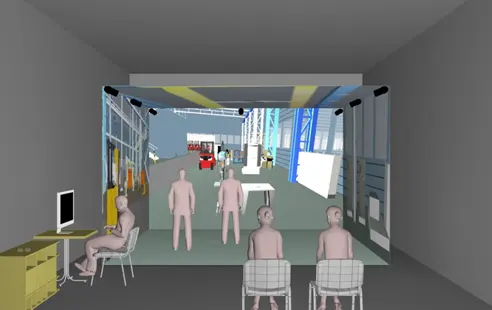Cognition and Interaction
The research cluster on cognition and interaction studies natural and artificial cognitive systems and their interaction. Research is performed from two perspectives: Methods of artificial intelligence are used to develop cognitive models which can support a deeper understanding of specific characteristics of cognitive processes. Empirical studies and insights from cognitive science research, psychology and sociology can used as blueprint for the development of human-level cognitive systems. We are interested in what people expect from intelligent systems, how they interpret system reactions in companion systems such as recommender or assistant technologies, and how they use these technologies. On the other side we study how artificial cognitive systems need to be built to allow for smooth and quasi-natural interaction with humans.
Selected Research Projects
Participating Disciplines and Researchers
- Cognitive Systems: Prof. Dr. Ute Schmid
- Human-Computer-Interaction and Information Visualization: Prof. Dr. Tom Gross, Prof. Dr. Fabian Beck
- Cognitive Psychology: Prof. Dr. Claus-Christian Carbon, Dr. Alexander Pastukhov, Dr. Marius Raab
- Personality Psychology: Prof. Dr. Astrid Schütz, Dr. Jessica R?hner
Relevant Publications
Breitschaft, S., Pastukhov, & Carbon, C. C. (2021). Where’s My Button? Evaluating the User Experience of Surface Haptics in Featureless Automotive User Interfaces.Transactions on Haptics.
Gerrits, L., Wirtz, M. & Hemesath, S. (2019). Der elektronische Personalausweis im internationalen Vergleich. In: Klenk, T. Nullmeier, F. & Wewer, G. (eds). Handbuch Digitalisierung in Staat und Verwaltung. Berlin: Springer.
Carbon, C. C. (2019). Psychology of Design. Design Science, 5(e26), 1-18.
Carbon, C. C., & Gebauer, F. (2017). The Safe-Range-Inventory (SRI): An assistance tool for optimizing the charging infrastructure for electric vehicles. Transportation Research Part F: Psychology and Behaviour, 47, 101-113.
K?ppe, C., Held, M. J., & Schütz, A. (2019). Improving emotion perception and emotion regulation through a web-based emotional intelligence training (WEIT) program for future leaders. International Journal of Emotional Education.
Leder, J., Horlitz, T., Puschmann, P., Wittstock, V., & Schütz, A. (2018). Comparing immersive virtual reality and powerpoint as methods for delivering safety training. Safety Science, 3 (July), 0–1.
Münder, M., & Carbon, C. C. (2022). Howl, whirr, and whistle: The perception of electric powertrain noise and its importance for perceived quality in electrified vehicles.Applied Acoustics, 185.
R?hner, J., Thoss, P., & Uziel, L. (2023). Can people with higher versus lower scores on impression management or self-monitoring be identified through different traces under faking? Educational and Psychological Measurement.
R?hner, J., Thoss, P. J., & Schütz, A. (2022). Lying on the dissection table: Anatomizing faked responses. Behavior Research Methods, 54, 2878–2904. https://doi.org/10.3758/s13428-021-01770-8
Stieg, J., Marks, P., Gerrits, L. (2019). UN-CODE: Software for Structuring and Visualizing Collective Decision-Making Based on Qualitative Data. Journal of Open Research Software, 7(1), p.25. DOI: doi.org/10.5334/jors.246
Wolter, D.. & ?z?ep, ?. L. (2021). Wissen über Raum und Zeit, In Handbuch für Künstliche Intelligenz, editiert von G?rz, G., Schmid, U. & Braun, T.




